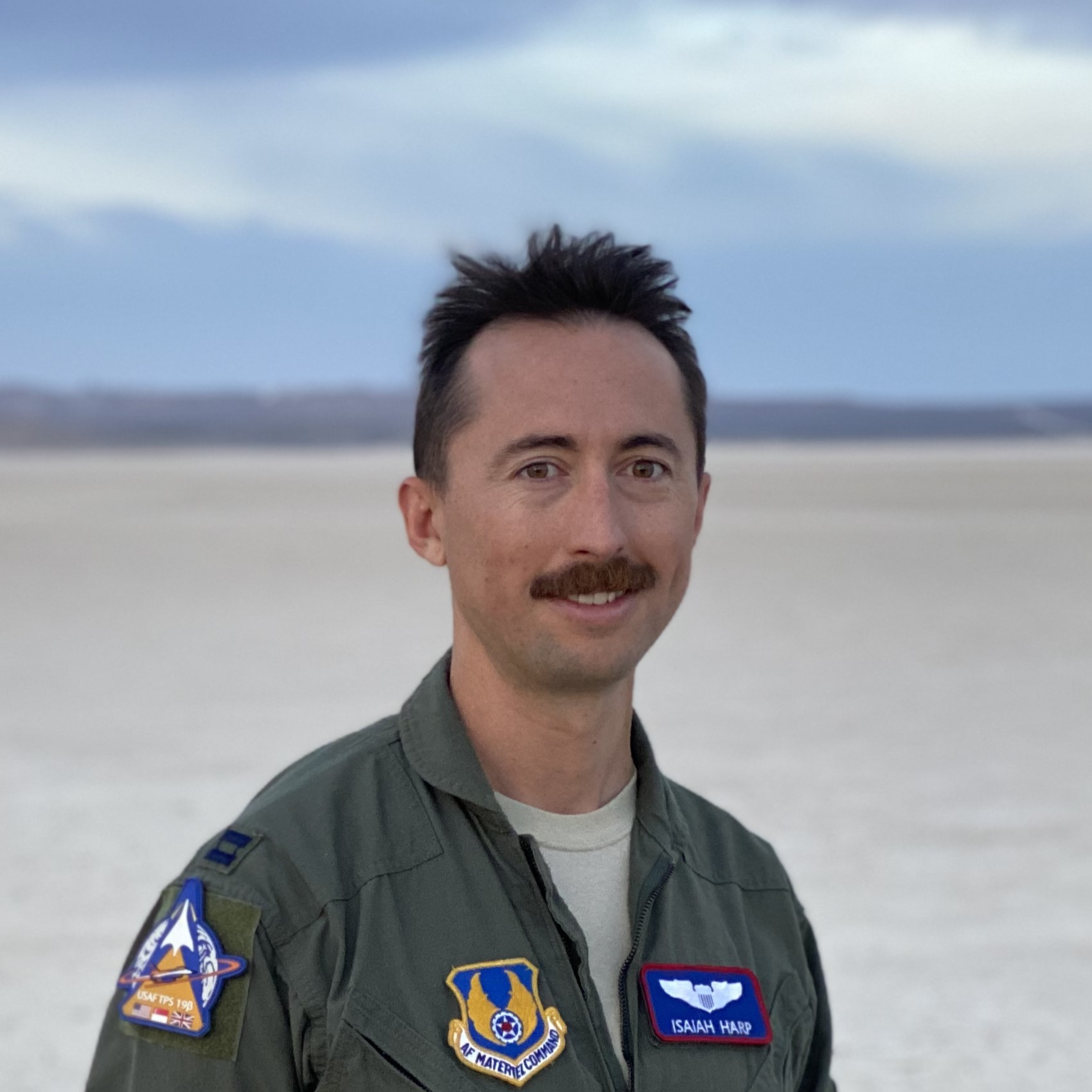Upcoming Event: Seminar
Lt Col D. Isaiah Harp,
12 – 1PM
Tuesday Oct 14, 2025
POB 6.304
In 2025, the military executes envelope expansion of its most exquisite aircraft using methods essentially unchanged since 1965. An offline model generates a prediction; a test pilot then flies the aircraft through a maneuver that replicates the parameters of the model to within narrow tolerances. Over the years the fidelity and computational cost of these offline predictions have increased, but the methods of flight test have not co-evolved.
Digital twins, which combine physics-based surrogate modeling with data ingestion and uncertainty quantification, will soon transform military flight test in three key ways. First, by generating fast, online predictions for arbitrary pilot inputs, they will eliminate tolerances – and therefore test points. Second, as they ingest flight test data they evolve into a truth source more reliable than either the physics priors or pure data alone. Finally, by quantifying uncertainty they allow test teams to reason in a principled way about safety and design of experiments.
In this talk, we will discuss ongoing efforts within the US Air Force for implementing flight test digital twins for full scale, high performance vehicles such as collaborative combat aircraft (CCA) and the F-47 next generation air dominance fighter.
Lt Col D. Isaiah “Knots” Harp is an experimental test pilot in the US Air Force and the only person qualified in both the F-22 and F-35. He has over 1,600 hours in more than 30 different aircraft, and over 1,000 hours in stealth fighters. Currently, he serves as Director of Operations at the Air Dominance Combined Test Force, where he oversees the Next Generation Air Dominance portfolio, including F-47 and collaborative combat aircraft. He is also the Principal Investigator for “The Pointless Project,” a multi-million-dollar research effort to replace traditional flight test points with digital twins created using physics-informed machine learning. Previously, Lt Col Harp was a combat fighter pilot in the F-22, an instructor of aeronautics at the Air Force Academy, a DARPA Service Chief’s Fellow, and a systems engineer at NASA’s Jet Propulsion Laboratory. He is a proud alumnus of both Stanford University and The University of Texas at Austin, where he dual-majored in Physics and Plan II.
